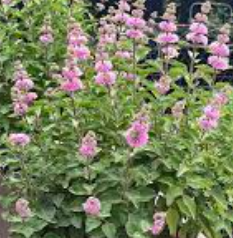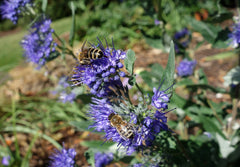If you're searching for a striking flowering summer perennial to enhance your garden with its vibrant colors and attractive foliage, look no further than the Caryopteris. Also known as Bluebeard or Blue Mist Shrub, Caryopteris is a captivating plant that adds a touch of elegance and beauty to any landscape. In this blog post, we'll explore the unique characteristics of Caryopteris and provide valuable tips on how to cultivate and care for this remarkable shrub.
Appearance and Varieties
Caryopteris is a woody summer perennial or small deciduous shrub that belongs to the Verbenaceae family. It is native to East Asia, including China, Japan, and Korea. This stunning plant typically grows to a height of 2 to 4 feet and spreads up to 3 to 6 feet wide, making it an excellent choice for borders, hedges, or as a focal point in your garden.

The most commonly cultivated species is Caryopteris × clandonensis, which is a hybrid between two Chinese species, Caryopteris mongolica and Caryopteris incana. This hybrid variety is known for its beautiful blue to lavender flowers, which bloom in late summer or early fall. However, there are also other cultivars available with different flower colors, such as white or pink.
Blooming Season

One of the most enchanting features of Caryopteris is its vibrant blooms, which appear when many other plants have finished flowering. In late summer or early fall, clusters of small, tubular flowers cover the shrub, creating a stunning display of color. The blossoms attract pollinators like butterflies and bees, making them a valuable addition to any pollinator-friendly garden.
Foliage and Form
Beyond its captivating flowers, Caryopteris also offers attractive foliage that adds visual interest throughout the growing season. The shrub features small, ovate to lanceolate leaves with a grayish-green hue, providing a lovely contrast against its flowers. The foliage emits a fragrant aroma when brushed or crushed, adding an extra sensory dimension to your garden.
Caryopteris has an open and airy growth habit, forming a rounded or mounded shape. Its arching branches give the plant a graceful appearance, and when planted en masse, it can create a stunning drift of color in your landscape.
Growing Conditions
Caryopteris thrives in full sun, so it's crucial to provide it with at least six hours of direct sunlight per day. Well-draining soil is essential for the plant's health and growth, as it dislikes standing water. If you have heavy clay soil, consider amending it with organic matter or planting Caryopteris in raised beds.
While the shrub is generally tolerant of a wide range of soil types, it prefers a slightly acidic to neutral pH. Adequate moisture is necessary for Caryopteris to establish itself, but once established, it becomes more drought-tolerant. Regular watering during dry spells will help maintain its vigor and promote healthy growth.

Care and Maintenance
Caryopteris is relatively low-maintenance, making it an excellent choice for both beginner and experienced gardeners. Here are some essential care tips:
- Pruning: In late winter or early spring, before new growth emerges, lightly prune Caryopteris to remove any dead or damaged branches. This will help maintain its shape and promote better flowering.
- Fertilization: Apply a balanced, slow-release fertilizer in early spring to provide essential nutrients for healthy growth. Follow the package instructions for the correct dosage.
- Mulching: Apply a layer of organic mulch around the base
























